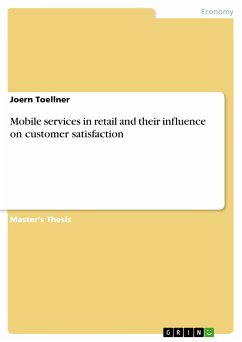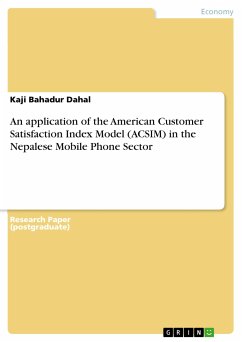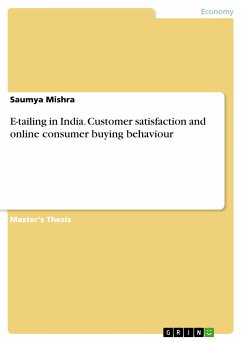Master's Thesis from the year 2014 in the subject Business economics - Offline Marketing and Online Marketing, grade: 2,3, University of Applied Sciences Essen, course: Master of Business Administration, language: English, abstract: Worldwide there is a strong growth in smartphone owners in comparison to previous years and the number of them will surpass the 1,4 billion mark worldwide by the end of 2013 (statista, 2013). Today, more than one third of world's population and more than 40 percent of Germany's population own a smartphone (GS1, 2013, 5, statista, 2013). Mobile phones and other mobiles are becoming part of our everyday life and are changing the way people manage it. They are the most used daily consumer good in the world and by this are becoming personal assistants that give users an always-connected and always-on lifestyle - a mobile lifestyle. Users are able to do everything from everywhere at any time with it: from doing business, communicating or playing interactive games to shopping. The increasing number of mobile devices and by this the anywhere accessibility of the Internet have an impact on the consumers' behavior in stationary stores. Customers do price checks with their smartphone, watching product videos or reading product reviews in the store and more often buy the desired product elsewhere. Retailers face the challenge of understanding how customers interact with their mobiles while shopping and take advantage of any opportunities to increase customer conversion and gain loyal customers (comscore, 2012). Customers expect mobile offerings. Today some retailers already respond on these demand and development, and try with new possibilities of mobile marketing to bring customers back from digital world into their stores (KPMG, 2012, 38), but they have to add value to all their offering and products and even to new technological possibilities like mobile services, which do not automatically generate advantages over competition (Rudolph/Emrich, 2008, 266). Mobile services in retail are services, that can be used independently of temporal and spatial restraints, and that are accessed through a mobile device in retail environment like i.e. mobile couponing receiving or paying with mobile phone. When launching such a service the retailer has to be sure whether a mobile service has the power to influence customer satisfaction inside the store. Customer satisfaction is the important connection between activities of the retailer and the resulting behaviour like repeat purchasing, cross selling, recommendation or complaint and by this relevant for economical success of a company (Homburg, 2008, 19).
Dieser Download kann aus rechtlichen Gründen nur mit Rechnungsadresse in A, B, BG, CY, CZ, D, DK, EW, E, FIN, F, GR, HR, H, IRL, I, LT, L, LR, M, NL, PL, P, R, S, SLO, SK ausgeliefert werden.









